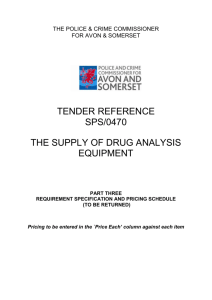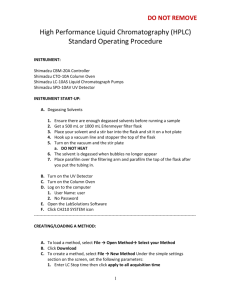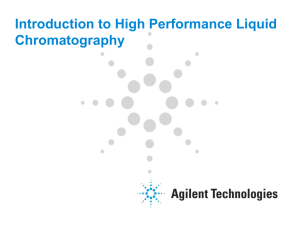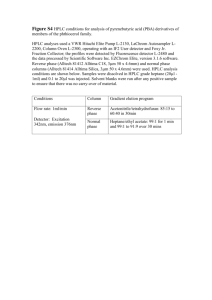Devrishi Goswami - OMICS International
advertisement
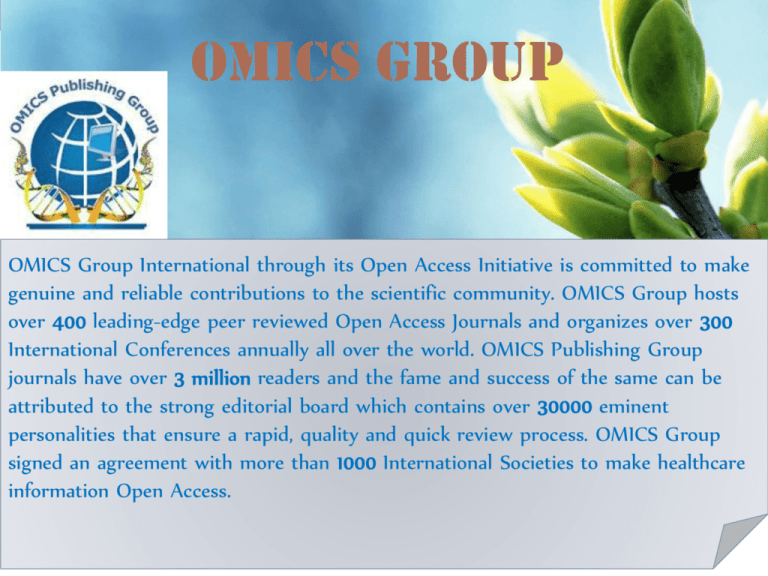
OMICS Group OMICS Group International through its Open Access Initiative is committed to make genuine and reliable contributions to the scientific community. OMICS Group hosts over 400 leading-edge peer reviewed Open Access Journals and organizes over 300 International Conferences annually all over the world. OMICS Publishing Group journals have over 3 million readers and the fame and success of the same can be attributed to the strong editorial board which contains over 30000 eminent personalities that ensure a rapid, quality and quick review process. OMICS Group signed an agreement with more than 1000 International Societies to make healthcare information Open Access. Contact us at: contact.omics@omicsonline.org OMICS Journals are welcoming Submissions OMICS Group welcomes submissions that are original and technically so as to serve both the developing world and developed countries in the best possible way. OMICS Journals are poised in excellence by publishing high quality research. OMICS Group follows an Editorial Manager® System peer review process and boasts of a strong and active editorial board. Editors and reviewers are experts in their field and provide anonymous, unbiased and detailed reviews of all submissions. The journal gives the options of multiple language translations for all the articles and all archived articles are available in HTML, XML, PDF and audio formats. Also, all the published articles are archived in repositories and indexing services like DOAJ, CAS, Google Scholar, Scientific Commons, Index Copernicus, EBSCO, HINARI and GALE. For more details please visit our website: http://omicsonline.org/Submitmanuscript.php SUDHEER BOBBA Editor Research Interest • HPLC, Preparative HPLC; Cap-LC; LC-MS (Triple Quad, Ion Trap and TOF); QTRAP 4000 & 5500; LTQ-Orbitrap; Q-exactive; Q-TOF; GC; GCMS; FT-IR; UV-Vis; Spectrofluorometry; NMR; Chiral separation; Chromatography skills; Sample preparation techniques (protein precipitation, liquid and solid phase extraction); Data interpretation; analysis; and management; Technical report preparation; Stability studies; Out of trend; Out of specification and Dissolution studies Biography • Sudheer Bobba completed his doctoral studies in May 2013 at University of Missouri- Kansas City. He was awarded the prestigious preparing future faculty fellowship for the academic years 2011-2014. He served as vice president and treasurer of pharmaceutical sciences graduate student association and also served as member of interdisciplinary student council executive board. Dr. Bobba has done summer internships at Johnson and Johnson (J&J), Vertex Pharmaceuticals, and Stowers Institute for Medical Research. He has authored/co-authored several peer reviewed research articles in reputed international journals. He is also a member of American Association of Pharmaceutical Scientists (AAPS) and American Society for Mass Spectrometry (ASMS). Dr. Bobba is also an honorary member of Phi Kappa Phi and Sigma Xi. Dr. Bobba joined Covance Labs in July 2014 as a scientist in drug metabolism group. His responsibilities include HPLC, LC-MS, and LC-MS/MS analytical method development for incoming test articles (drug substance and drug product) and its metabolites along with structural identification and characterization of drug metabolites using advanced LC-MS/MS and radiochromatographic techniques. He is currently serving as reviewer for several journals such as Journal of Drug Metabolism & Toxicology, European Journal of Pharmaceutical Sciences, Journal of Veterinary Pharmacology and Therapeutics, Biomedical Chromatography, Clinical Pharmacology & Biopharmaceutics, Pharmaceutical Sciences, Pharmaceutica Analytica Acta, Pharmaceutical Care & Health Systems, Advances in Pharmacoepidemiology & Drug Safety. Recent Publication • Ion-pairing liquid chromatography-tandem mass spectrometry- based quantification of uridine diphosphate-linked intermediates in the Staphylococcus aureus cell wall biosynthesis pathway. • Quantitative lc-ms/ms analysis of cytoplasmic bacterial cell wall biosynthesis intermediates: application to vancomycin resistance VRE (982.2) • Ion-pairing LC-MS/MS-based quantification of UDP-linked intermediates in the< i> S. aureus</i> cell wall biosynthesis pathway Research Interest Topic • HPLC High-performance liquid chromatography (HPLC; formerly referred to as high-pressure liquid chromatography), is a technique in analytic chemistry used to separate the components in a mixture, to identify each component, and to quantify each component. It relies on pumps to pass a pressurized liquid solvent containing the sample mixture through a column filled with a solid adsorbent material. Each component in the sample interacts slightly differently with the adsorbent material, causing different flow rates for the different components and leading to the separation of the components as they flow out the column. HPLC has been used for medical (e.g. detecting vitamin D levels in blood serum), legal (e.g. detecting performance enhancement drugs in urine), research (e.g. separating the components of a complex biological sample, or of similar synthetic chemicals from each other), and manufacturing (e.g. during the production process of pharmaceutical and biological products) purposes. Principle of Chromatography Chromatography is a technique by which a mixture sample is separated into components. Although originally intended to separate and recover (isolate and purify) the components of a sample, today, complete chromatography systems are often used to both separate and quantify sample components. • What does HPLC stand for? HPLC is short for the High Performance LC. HPLC is an analysis method that yields high performance and high speed compared with traditional column chromatography because of the forcibly pumped mobile phase. Recently, ultrafast analysis using a high-pressureresistant apparatus has been attracting attention. UHPLC (Ultra High Performance LC) is becoming established as an abbreviation for this ultrafast LC method. Schematic representation of an HPLC unit: (1) Solvent reservoirs, (2) Solvent degasser, (3) Gradient valve, (4) Mixing vessel for delivery of the mobile phase, (5) High-pressure pump, (6) Switching valve in "inject position", (6') Switching valve in "load position", (7) Sample injection loop, (8) Pre-column (guard column), (9) Analytical column, (10) Detector (i.e. IR, UV), (11) Data acquisition, (12) Waste or fraction collector. Types of HPLC Normal phase HPLC: • This is essentially just the same as you will already have read about in thin layer chromatography or column chromatography. Although it is described as "normal", it isn't the most commonly used form of HPLC. • The column is filled with tiny silica particles, and the solvent is non-polar - hexane, for example. A typical column has an internal diameter of 4.6 mm (and may be less than that), and a length of 150 to 250 mm. • Polar compounds in the mixture being passed through the column will stick longer to the polar silica than non-polar compounds will. The non-polar ones will therefore pass more quickly through the column. • Reversed phase HPLC • In this case, the column size is the same, but the silica is modified to make it non- polar by attaching long hydrocarbon chains to its surface - typically with either 8 or 18 carbon atoms in them. A polar solvent is used - for example, a mixture of water and an alcohol such as methanol. • In this case, there will be a strong attraction between the polar solvent and polar molecules in the mixture being passed through the column. There won't be as much attraction between the hydrocarbon chains attached to the silica (the stationary phase) and the polar molecules in the solution. Polar molecules in the mixture will therefore spend most of their time moving with the solvent. • Non-polar compounds in the mixture will tend to form attractions with the hydrocarbon groups because of van der Waals dispersion forces. They will also be less soluble in the solvent because of the need to break hydrogen bonds as they squeeze in between the water or methanol molecules, for example. They therefore spend less time in solution in the solvent and this will slow them down on their way through the column. • That means that now it is the polar molecules that will travel through the column more quickly. • Reversed phase HPLC is the most commonly used form of HPLC. A flow scheme for HPLC Injection of the sample Injection of the sample is entirely automated, and you wouldn't be expected to know how this is done at this introductory level. Because of the pressures involved, it is not the same as in gas chromatography (if you have already studied that). Retention time The time taken for a particular compound to travel through the column to the detector is known as its retention time. This time is measured from the time at which the sample is injected to the point at which the display shows a maximum peak height for that compound. Different compounds have different retention times. For a particular compound, the retention time will vary depending on: • the pressure used (because that affects the flow rate of the solvent) • the nature of the stationary phase (not only what material it is made of, but also particle size) • the exact composition of the solvent • the temperature of the column That means that conditions have to be carefully controlled if you are using retention times as a way of identifying compounds. The detector There are several ways of detecting when a substance has passed through the column. A common method which is easy to explain uses ultra-violet absorption. Many organic compounds absorb UV light of various wavelengths. If you have a beam of UV light shining through the stream of liquid coming out of the column, and a UV detector on the opposite side of the stream, you can get a direct reading of how much of the light is absorbed. The amount of light absorbed will depend on the amount of a particular compound that is passing through the beam at the time. Interpreting the output from the detector The output will be recorded as a series of peaks - each one representing a compound in the mixture passing through the detector and absorbing UV light. As long as you were careful to control the conditions on the column, you could use the retention times to help to identify the compounds present - provided, of course, that you (or somebody else) had already measured them for pure samples of the various compounds under those identical conditions. But you can also use the peaks as a way of measuring the quantities of the compounds present. Let's suppose that you are interested in a particular compound, X. If you injected a solution containing a known amount of pure X into the machine, not only could you record its retention time, but you could also relate the amount of X to the peak that was formed. The area under the peak is proportional to the amount of X which has passed the detector, and this area can be calculated automatically by the computer linked to the display. The area it would measure is shown in green in the (very simplified) diagram. If the solution of X was less concentrated, the area under the peak would be less - although the retention time will still be the same. For example: This means that it is possible to calibrate the machine so that it can be used to find how much of a substance is present - even in very small quantities. Be careful, though! If you had two different substances in the mixture (X and Y) could you say anything about their relative amounts? Not if you were using UV absorption as your detection method. In the diagram, the area under the peak for Y is less than that for X. That may be because there is less Y than X, but it could equally well be because Y absorbs UV light at the wavelength you are using less than X does. There might be large quantities of Y present, but if it only absorbed weakly, it would only give a small peak. Injector Mixer Chromatogram mAU Pumps Start Injection Column Detector Solvents time Injector Mixer Chromatogram mAU Pumps Start Injection Column Detector Solvents time Injector Mixer Chromatogram mAU Pumps Start Injection Column Detector Solvents time Injector Mixer Chromatogram mAU Pumps Start Injection Column Detector Solvents time Injector Mixer Chromatogram mAU Pumps Start Injection Column Detector Solvents time Injector Mixer Chromatogram mAU Pumps Start Injection Column Detector Solvents time Injector Mixer Chromatogram mAU Pumps Start Injection Column Detector Solvents time Injector Mixer Chromatogram mAU Pumps Start Injection Column Detector Solvents time Injector Mixer Chromatogram mAU Pumps Start Injection Column Detector Solvents time Injector Mixer Chromatogram mAU Pumps Start Injection Column Detector Solvents time Injector Mixer Chromatogram mAU Pumps Start Injection Column Detector Solvents time Injector Mixer Chromatogram mAU Pumps Start Injection Column Detector Solvents time Injector Mixer Chromatogram mAU Pumps Start Injection Column Detector Solvents time Injector Mixer Chromatogram mAU Pumps Start Injection Column Detector Solvents time Injector Mixer Chromatogram mAU Pumps Start Injection Column Detector Solvents time The Chromatogram to - elution time of unretained peak tR- retention time - determines sample identity tR tR mAU Area or height is proportional to the quantity of analyte. to Injection time Modes of High Performance Liquid Chromatography Types of Compounds Mode Stationary Phase Mobile Phase Neutrals Weak Acids Weak Bases Reversed Phase C18, C8, C4 cyano, amino Water/Organic Modifiers Ionics, Bases, Acids Ion Pair C-18, C-8 Water/Organic Ion-Pair Reagent Compounds not soluble in water Normal Phase Silica, Amino, Cyano, Diol Organics Ionics Inorganic Ions Ion Exchange Anion or Cation Exchange Resin Aqueous/Buffer Counter Ion High Molecular Weight Compounds Polymers Size Exclusion Polystyrene Silica Gel FiltrationAqueous Gel PermeationOrganic HPLC Applications Bioscience Chemical polystyrenes dyes phthalates tetracyclines Pharmaceuticals corticosteroids antidepressants barbiturates proteins peptides nucleotides Consumer Products lipids antioxidants sugars Environmental polyaromatic hydrocarbons Inorganic ions herbicides Clinical amino acids vitamins homocysteine OMICS Group Open Access Membership OMICS publishing Group Open Access Membership enables academic and research institutions, funders and corporations to actively encourage open access in scholarly communication and the dissemination of research published by their authors. For more details and benefits, click on the link below: http://omicsonline.org/membership.php
